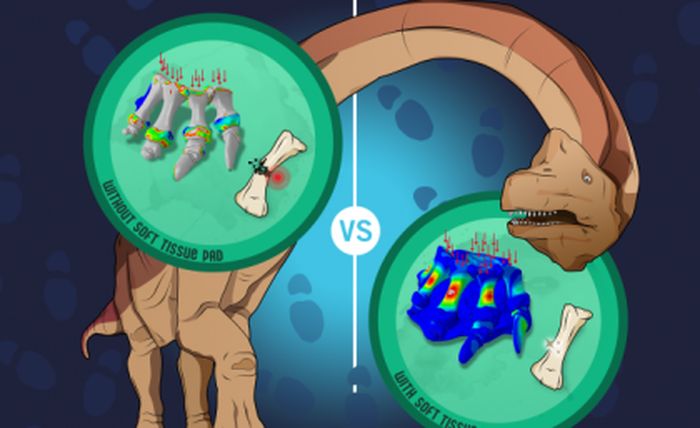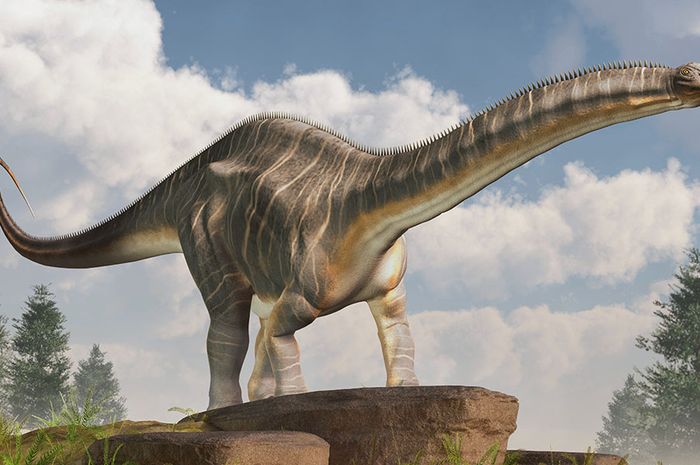Natural History Museum
–
Artist’s impression of Brontosaurus.
–
Nationalgeographic.co.id—Dinosaur sauropods are the largest known land animals. They roamed the earth for more than 100 million years. But how sauropod dinosaur like Brontosaurus and Diplodocus supporting its gigantic body, has become a mystery.
But now, scientists led by the University of Queensland and Monash University have solved the eternal mystery. The team used 3D modeling and engineering methods to digitally reconstruct and test the function of the leg bones of different sauropod dinosaurs.
This study report has been published in Science Advance by title “Softening the steps to gigantism in sauropod dinosaurs through the evolution of a pedal pad” recently. The publication is an open access journal that can be obtained online.
Andréas Jannel conducted the research during a PhD study at UQ’s Dinosaur Lab and said the team found that the hind legs of sauropods had soft tissue cushioning under the heel. The foot pads serve to absorb their enormous body weight.
“We’ve finally confirmed a long-suspected idea and we’re providing, for the first time, biomechanical evidence that soft tissue pads — particularly in their hind legs — will play an important role in reducing locomotor and bony stress,” says Jannel.
“It’s amazing to imagine that these giant creatures were able to support their own weight on land.”
They were first thought to be semi-aquatic with the buoyancy of the water supporting their enormous weight. But that theory was disproved by the discovery of traces of sauropods in terrestrial deposits in the mid-twentieth century.
Olga Panagiotopoulou of Monash University said that sauropods were also thought to have had legs similar to those of modern elephants.
“Popular culture, think Jurassic Park or Walking with Dinosaursoften depicts these giants with almost cylindrical, thick legs, like elephants,” said Panagiotopoulou.
“But when it comes to their skeletal structure, elephants are actually ‘toed’ on all four legs, whereas sauropods had different foot configurations on their fore and hind legs.”

Andreas Jannel
–
Computer modeling shows the feet of sauropods had soft tissue pads.
–
“Sauropod forelimbs were more columnar-like, while they featured more ‘heel cushion’ at the back supported by large soft-tissue cushioning.”
<!–
–>
PROMOTED CONTENT
Featured Videos
–


